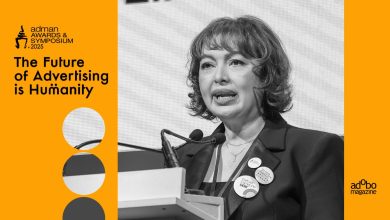GLOBAL — Although women in Asia Pacific are increasingly more educated than their male counterparts, progress towards gender parity is still sluggish – especially in the areas of business leadership, business ownership and political participation, according to MasterCard’s latest Index of Women’s Advancement (H2 2014).
Out of the 16 Asia Pacific markets surveyed, women in 10 markets outnumber men in tertiary education gross enrolment rate. While there is a strong correlation between tertiary education attainment and business leadership in markets such as the Philippines (130.8 for tertiary education; 92.5 for business leaders, New Zealand (146.3 for tertiary education; 70.2 for business leaders) and Thailand (123.6 for tertiary education; 62.7 for business leaders), women in the majority of markets across Asia Pacific are lagging behind in business leadership despite their educational qualifications. The Philippines continues to have the highest ratio of female-to-male business leaders for the ninth consecutive year.
The MasterCard Index of Women’s Advancement measures the socioeconomic standing of women across Asia Pacific. The Index is comprised of three main indicators which are derived from additional sub-indicators: Employment (Workforce Participation, Regular Employment), Capability (Secondary Education, Tertiary Education) and Leadership (Business Owners, Business Leaders, Political leaders).
Scores are indexed to 100 males to indicate how close or how far women in each of the 16 Asia Pacific markets covered by the research are to achieving socio-economic parity with men. A score under 100 indicates gender inequality in favor of males while a score above 100 indicates inequality in favor of females. A score of 100 indicates equality between the sexes. The Index and its accompanying reports do not represent MasterCard financial performance.
Across the region, New Zealand had the highest overall Index score of 77, followed by Australia (76.0), the Philippines (72.6) and Singapore (70.5).
• On the other hand, India (44.2), Bangladesh (44.6), Sri Lanka (46.2) and Bangladesh had scores below 50, indicating that much more needs to be done to achieve gender parity.
• Thailand recorded the largest decline overall (59.4, down 7.2 index points from H1 2014), while Singapore had the largest improvement (70.5, up 0.4 index points from H1 2014).
• With the exception of six markets (Hong Kong, South Korea, Taiwan, Singapore, Malaysia and the Philippines), the scores for the remaining markets declined or remained unchanged.
Of the three components, Capability remains the strongest indicator of Asia Pacific women’s progress towards gender parity for the ninth consecutive year.
• With the exception of South Korea (85.9), the Capability index scores for all markets in the region are above 90.0.
• Five markets, namely New Zealand, the Philippines, Vietnam, Sri Lanka and Thailand had a score of 100.0, indicating that women are on par or better represented in secondary and tertiary institutions than their male counterparts.
• Comparatively, women in India (85.7), South Korea (85.9) and Bangladesh (87.6) have fewer opportunities than men when it comes to secondary and tertiary education.
• Most notably, women in Bangladesh have made the biggest strides in tertiary education enrolment over the past nine years (2007 to 2015), rising 31.7 index points to 76.8.
The results show that Employment remains the second strongest component over the nine year period from 2007 to 2015.
• With the exception of Indonesia (78.4) and Malaysia (75.9), women across the majority of markets in Asia Pacific are making progress towards becoming as economically active as their male counterparts, scoring above the 80-point mark for Employment.
• Four markets score higher than 90 index points for Employment: New Zealand (91.3), China (91.2), Australia (90.8) and Taiwan (90.2).
◦ Taiwanese women advanced the most from the previous year, rising 0.4 index points to 90.2, surpassing the 90-point mark for the first time since 2007.
• Women in India (99.0), Bangladesh (102.4) and China (99.6) have made the biggest strides towards attaining gender parity in Regular Employment over the past nine years, rising 39.6, 21.1 and 16.0 index points, respectively.
Leadership remains the weakest component from the previous year (and also over the nine year period).
• New Zealand (50.6) and the Philippines (50.1) are the only two markets with more than 50 women business owners/ business leaders/ government leaders for every 100 male business owners/ business leaders/ government leaders.
• Philippines, Singapore and Indonesia show the most marked advancement in women’s leadership since 2007, gaining 12.2, 8.7 and 7.5 index points, respectively.
• Thai women have made the most significant progress in business leadership since nine years ago, jumping 20.4 index points to 62.7 in 2015.
• Business ownership among Singaporean women has also made commendable progress over the last nine years, with the proportion of female-to-male business owners increasing from 29.9 in 2007 to 42.1.
• Filipino women have exceled the most in politics with the ratio of female-to-male politicians doubling from 18.2 in 2007 to 37.3 in 2015.
“Study after study shows how public and private sector companies – and their bottom lines – benefit from having more women in leadership. In fact, companies with more women in leadership outperform those who do not, so the male dominance of leadership roles should be concerning. In a highly competitive global market, companies are beginning to understand why integrating talented women into leadership structures is imperative for sustainable economic growth and innovation in both developed and developing markets,” said Georgette Tan, group head, Communications, Asia Pacific, MasterCard.








